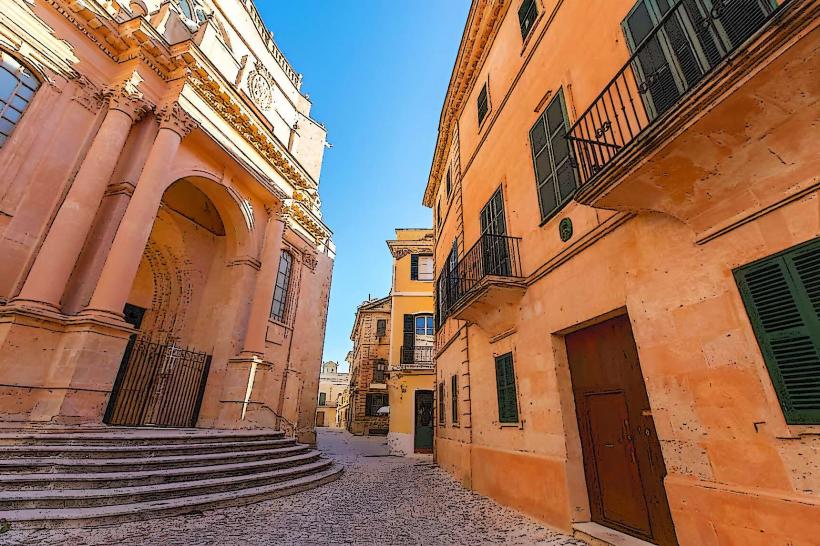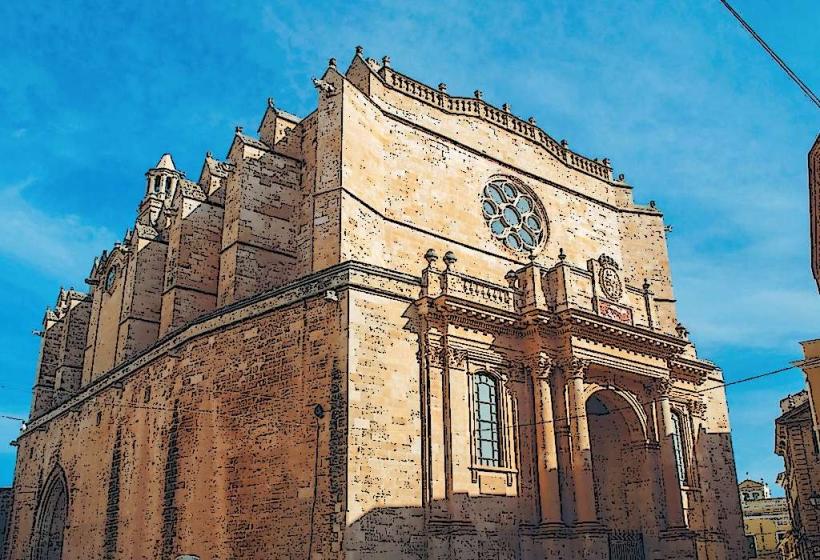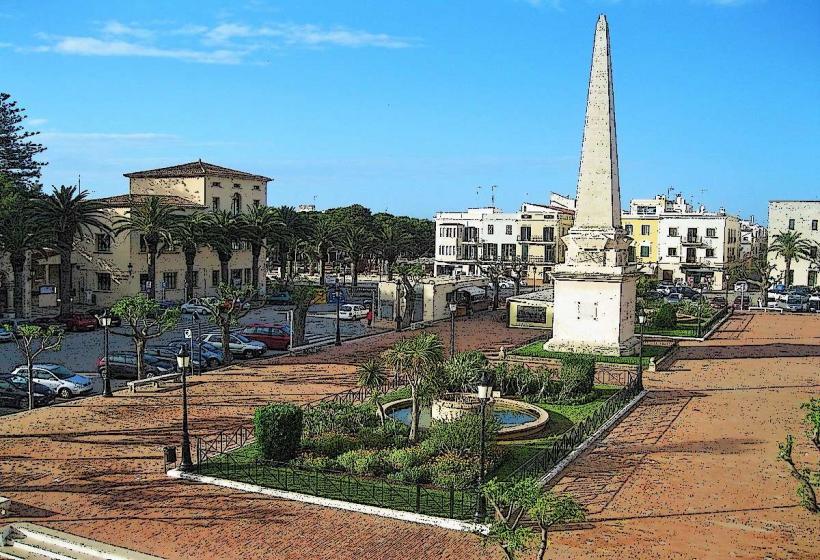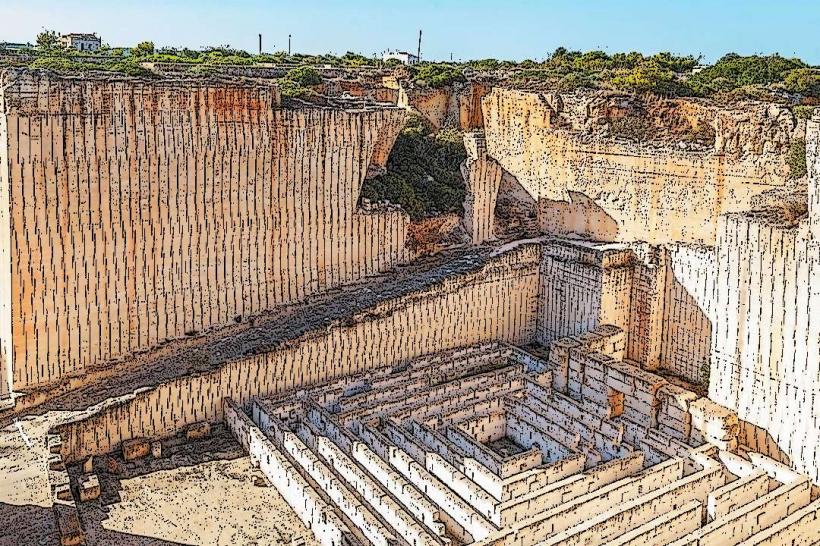Information
Landmark: Naveta d’Es TudonsCity: Ciutadella
Country: Balearic Islands
Continent: Europe
Naveta d’Es Tudons is one of the most important and iconic archaeological sites on the island of Menorca, Spain. This prehistoric monument is a naveta, a type of ancient tomb built by the Talayotic culture, which flourished on the Balearic Islands during the Bronze Age (approximately 1000-800 BCE). Naveta d’Es Tudons is particularly notable for its exceptional state of preservation and its unique architectural design, which sets it apart from other prehistoric structures.
1. Historical Significance
- Talayotic Culture:
The Talayotic culture is known for its distinctive megalithic architecture, including talayots (stone towers), taulas (T-shaped structures), and navetas. The Naveta d’Es Tudons is part of this broader cultural heritage, which is characterized by the construction of impressive stone structures, often used for burial purposes or as ceremonial sites. - Tomb Function:
The Naveta d’Es Tudons is a funerary monument, built as a communal tomb for the people of the area. It was used to bury the deceased, and its use was likely associated with religious or ritual practices. It is estimated that the tomb was in use from around 1000 BCE until 800 BCE.
2. Architecture
- Design and Structure:
The Naveta d’Es Tudons is a roofed burial chamber made from large, carefully cut limestone blocks. It has a distinctive boat-shaped structure, which is where the term "naveta" (meaning "little ship") comes from. The tomb is characterized by its corbelled roof, where the stones gradually overlap each other as they rise towards the center, creating a vaulted ceiling.- The main chamber is divided into two sections, with the entrance located at the western end. The structure is well-preserved, and the interior still contains traces of human remains and artifacts, including pottery and stone tools.
- Dimensions:
The tomb is approximately 12 meters long and 4.5 meters wide, with a height of about 4 meters. The walls are made up of large stone blocks, and the roof is a complex corbel vault that forms the characteristic shape of a ship's hull.
3. Archaeological Discoveries
- Human Remains:
Excavations at the site have revealed human remains, including bones and funerary objects, such as pottery and tools, indicating that the tomb was used for multiple burials over time. The remains found suggest that the tomb was used for the burial of prominent individuals or community leaders, likely associated with the Talayotic elite. - Artifacts:
Archaeologists have discovered various artifacts within the tomb, including ceramic vessels, stone tools, and other objects that likely held ceremonial or symbolic significance. These items help researchers understand the religious beliefs and customs of the Talayotic people. - Funerary Practices:
The remains found within the Naveta suggest that the burial practices were complex. The Talayotic people are thought to have practiced secondary burial (reburial of bones after they had decomposed), which was a common practice in many ancient cultures. This indicates a highly organized and ritualistic approach to death and the afterlife.
4. Cultural and Religious Context
- Religious Beliefs:
The Talayotic people likely believed in an afterlife, and the Naveta d’Es Tudons may have served as a sacred space where offerings were made to honor the deceased. The boat-shaped design of the tomb may have symbolized a journey to the afterlife, reflecting the maritime culture and the significance of the sea to the people of Menorca at the time. - Social Hierarchy:
The fact that the tomb was used for communal burials of prominent individuals suggests the existence of a social hierarchy. The Talayotic culture was likely organized around a chiefdom system, with important families or clans having access to these types of burial sites.
5. Preservation and Visitor Experience
- State of Preservation:
The Naveta d’Es Tudons is one of the best-preserved navetas in the Balearic Islands, thanks to its solid construction and its protection over the centuries. It stands as a remarkable example of ancient Balearic architecture and is a National Monument. - Visitor Center and Museum:
A visitor center located near the site provides educational displays and interpretive materials about the Talayotic culture, the Naveta d’Es Tudons, and other related archaeological sites on Menorca. Visitors can learn more about the history of the island's early inhabitants and the significance of the Talayotic tombs. - Access and Location:
The Naveta d’Es Tudons is located in the western part of Menorca, near the village of Ciutadella. It is easily accessible by car, and the site is a popular stop for tourists interested in Menorca's prehistoric past. It is situated in a beautiful natural setting, with views of the surrounding countryside.
6. Nearby Attractions
- Talayotic Sites:
The Naveta d’Es Tudons is part of a cluster of Talayotic sites in Menorca, which includes other important archaeological locations like the Taula de Trepuco, the Talayots of Torre d’en Galmés, and the Naveta of Es Càrritx. These sites are scattered across the island and offer further insight into the Talayotic culture. - Ciutadella:
The nearby town of Ciutadella, Menorca's former capital, offers a wealth of historic sites, including the Ciutadella Cathedral, Palau del Governador, and the ancient city walls. After visiting the Naveta, travelers can explore the charming old town of Ciutadella.
7. Conclusion
The Naveta d’Es Tudons is an outstanding example of prehistoric architecture and a significant marker of the Talayotic culture in Menorca. Its well-preserved structure offers a unique glimpse into the burial practices and religious beliefs of the island’s ancient inhabitants. For anyone interested in ancient history, archaeology, or the cultural heritage of Menorca, visiting the Naveta d’Es Tudons is a must. The site stands as a testament to the island's rich history and offers visitors a chance to connect with Menorca’s prehistory in a beautiful and tranquil setting.





